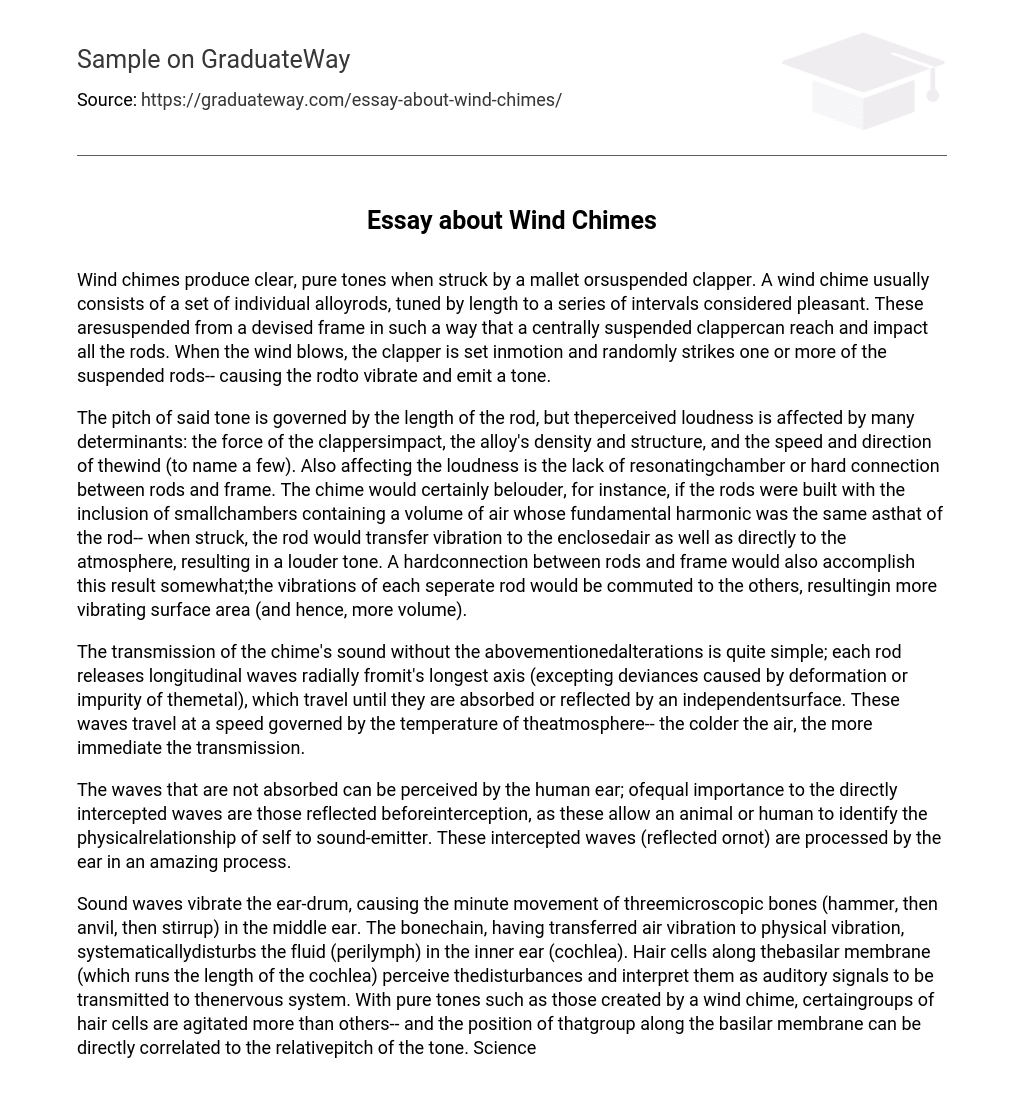Wind chimes produce melodious sounds when struck by a mallet or suspended clapper. Generally, wind chimes are made up of metal rods that are tuned to create pleasant intervals based on their length. These rods are hung from a frame in such a way that a centrally suspended clapper can reach and strike all of them. When the wind blows, the clapper moves and randomly strikes one or more rods, causing them to vibrate and generate tones.
The pitch of the tone is determined by the length of the rod, while various factors such as the force of impact, alloy density and structure, wind speed and direction influence the perceived loudness. The absence of a resonating chamber or solid connection between rods and frame also impacts loudness. For instance, if small chambers filled with air that had the same fundamental harmonic as the rod were included in the rods, striking them would transfer vibrations to both enclosed air and atmosphere, resulting in a louder tone. Similarly, a solid connection between rods and frame would increase volume by transmitting vibrations between rods and increasing vibrating surface area.
The transmission of the chime’s sound is a simple process. Longitudinal waves are emitted by each rod along its longest axis, with exceptions due to deformations or impurities in the metal. These waves propagate until they encounter another surface and either get absorbed or reflected. The speed of wave transmission depends on the temperature of the atmosphere – colder air results in faster propagation.
The human ear can perceive the waves that are not absorbed. In addition to the directly intercepted waves, the waves reflected before interception are also important for determining the physical relationship between the observer and the sound source. The ear processes these intercepted waves, whether they are reflected or not, in a remarkable manner.
Sound waves cause the ear-drum to vibrate, which in turn causes three microscopic bones (hammer, anvil, stirrup) in the middle ear to move. These bones transfer the vibration from air to physical movement, which then disturbs the fluid (perilymph) in the inner ear (cochlea). Hair cells located along the basilar membrane, running the length of the cochlea, detect and interpret these disturbances as auditory signals. These signals are then transmitted to the nervous system. Pure tones, like those produced by a wind chime, selectively stimulate certain groups of hair cells more than others. The position of these groups along the basilar membrane directly corresponds to the pitch of the tone. Science





